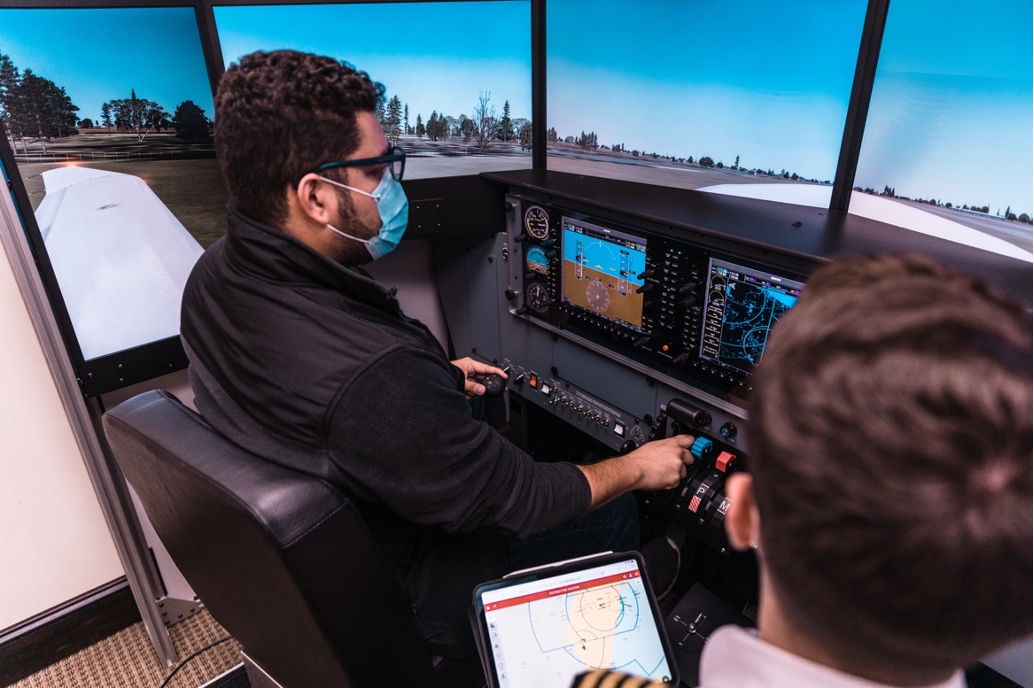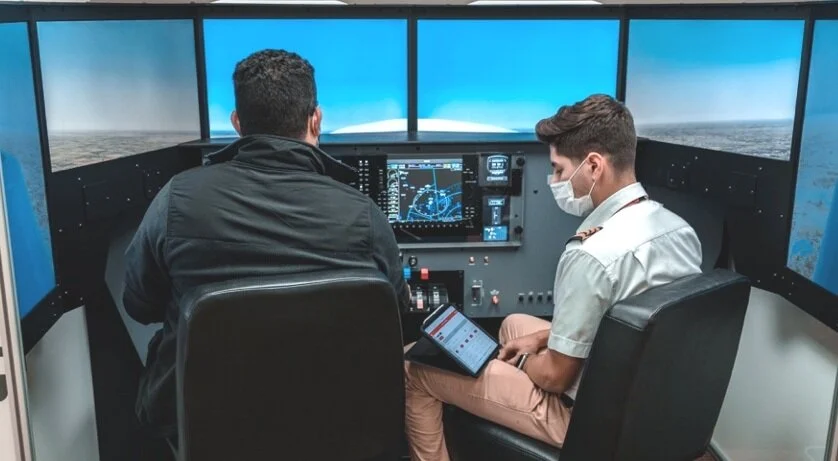"Unfavorable weather conditions." It's the phrase every student pilot dreads hearing when all you want to do is get out and fly. Even in South Florida, with our 365 days of sun, we've come across a handful of days where weather conditions make it too dangerous or uncomfortable for a student to fly.
Thankfully, technology has a solution for everything. Simulators! Flight simulators are less noisy then airplanes. They are not as expensive to operate like and they don’t require expensive avgas. Plus there is no insurance company to pay.

180° View makes flying the Redbird simulator more realistic.
Flight simulators are an excellent way for students to earn some hours and get familiar with various aircraft. The controls and physics are the same as the planes you'd fly in the skies, with the added benefit of not burning any fuel and virtually flying at just about any airport you want!
That means you can “fly” through snow while never leaving Miami!
Simulators also have an added safety benefit—you're still on the ground after all. There is a reason why every airline uses them, there are just some things we can’t really practice in real life without compromising the safety of flight, like flying into a cloud without an instrument rating.
Alongside an instructor, they're the perfect tool to run through various scenarios. Below are just some of the few ways simulators come-in-handy for student pilots:
Input training: advanced simulators can interpret switch positions and other flight computer input. The best part is, the simulator will react with sounds and lights just like the real thing.
Procedures training: whether you're training for your first solo or a commercial flight, running through checklists and "flows" in a simulator is a great way to get acquainted with various procedures.
Now that you're acquainted with Simulators and their usage, we're thrilled to announce our latest addition to Aviator Zone Academy, a state of the art Redbird LD!
How much training can be done in simulators?
The Redbird LD is FAA approved as an Advanced Aviation Training Device, it meets the requirements for EASA FNTP qualification, and many other authorities recognize the value of training in the LD.
Under part 61 you can log the following hours of training:
§ 61.109(k)(1) — Private Pilot Certificate; up to 2.5 hours
§ 61.65(i) — Instrument Rating; up to 20 hours
§ 61.129(i)(l)(i) — Commercial Pilot Certificate; up to 50 hours
§ 61.159(a)(4)(i) — Airline Transport Pilot Certificate; up to 25 hours
Under Part § 141.41(b) you can log the following hours of training:
Appendix B — Up to 15% towards the total Private Pilot training time requirements;
Appendix C — Up to 40% towards the total Instrument training time requirements;
Appendix D — Up to 20% towards the total Commercial Pilot training time requirements;
Appendix E — Up to 25% towards the total Airline Transport Pilot training time requirements;
Our Simulator is installed and ready to simulate flight of none other than our latest aircraft addition, a Diamond DA40!
Stop by for a tour and book a session with our new sim today!

Aviator Zone student practicing visual flight training in a Diamond Star DA40.


.png?width=178&height=50&name=Aviator%20Zone%20Academy%20(5).png)
Submit a Comment